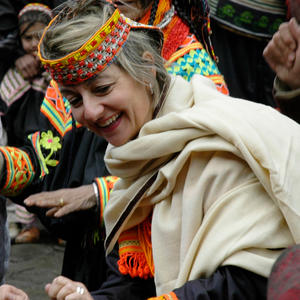A visit to Bhutan isn’t really complete unless you have had the chance to see one of their religious festivals. They are called “tsechus” and are generally held in the local dzong of the region (a dzong being both a monastic and administrative fortified complex, the like of which abound in Bhutan’s various regions).
This trip we are going into the heartland of Bhutan to its sacred valleys of Bumthang to see two such tsechus and on the night of our arrival here we get news that the most powerful ritual of all will be performed just before midnight that night: the “tersham” meaning Treasure Dance or as it is more commonly known, the Naked Dance.
At the appointed hour we arrive at Jampey Lhakhang - a highly significant monastery supposedly built in 659AD - all huddled in our down jackets, fleeces, hats, scarves, gloves and warmest underwear, sitting in amongst the local people (similarly dressed for the temperature which seems to have plummeted below zero) and expectation and excitement is rising in the crowd.
A large bonfire has been built in the centre of the arena and as sparks fly up to heaven, several fully dressed men of the village arrive and slip behind the curtains that will hide their modesty until they appear to perform the dance.
One of the valley’s ancients sits next to me and tries to impress upon me and all those around that this is not a thing of fun but a serious religious rite that demands respect or else the valley may have to endure a year of bad harvest and little prosperity as apparently occurred several years ago when they failed to perform this fertility puja to their local deities.
Those who have already been to Bhutan will know that the phallus is a much illustrated, sculpted and carved symbol which adorns many gate posts, water fountains, front porches and house walls. Not surprising then, that this part of the male anatomy should be at the centre of this naked dance.
When finally the dancers pour out from behind the back curtains to gather around the great fire , the so called dance really appears to be a flaunting of the men’s “endowments” and really has little in the way of choreography. However, it delights the crowd with whoops, giggles and teasing catcalls coming from the onlookers as many recognise friends, neighbours and acquaintances, despite attempts to remain anonymous with their faces swathed in rags, tassels sand masks.
Probably due to the freezing cold temperature, the dance barely lasts 20 minutes but it is an extraordinary event that one feels could only take place in this extraordinary culture. Let’s hope that the local deities have been appeased and that a fruitful and prosperous year lies ahead for these valleys and their people.
